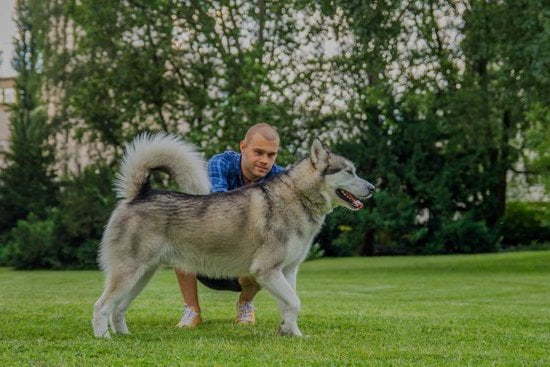So you’ve decided you want to crate train your dog. That’s great! Crate training can be an extremely effective way to housebreak your dog and can make life much easier for both of you. Here are a few tips to help you get started:
1. Choose the right crate.
When crate training a dog, it’s important to choose the right crate. The crate should be big enough for the dog to stand up and turn around in, but not much bigger. If the crate is too big, the dog will be able to eliminate in one corner and sleep in another, defeating the purpose of crate training.
2. Introduce the dog to the crate gradually.
Don’t just throw the dog in the crate and expect him to love it. Instead, introduce the dog to the crate gradually. Put a few treats in the crate and let the dog eat them. Once the dog is comfortable going into the crate, start closing the door for a few seconds at a time. Gradually increase the amount of time the dog spends in the crate.
3. Use positive reinforcement.
The key to successful crate training is positive reinforcement. Whenever the dog does something right, reward him with a treat or a pat on the head. This will help him associate the crate with good things and will make him more likely to comply when you ask him to go in the crate.
4. Be patient.
crate training a dog can take some time, so be patient. The key is to take things slowly and to be consistent. If you follow these tips, you’ll be on your way to successfully crate training your dog in no time!
How Can I Crate Train My Dog
?
Crate training can be a very beneficial tool for both you and your dog. It can help with house training, provide a safe place for your dog to rest and can even be used as a means of travelling with your pet.
The key to successful crate training is to make the crate a positive experience for your dog. This means making the crate feel like a safe and comfortable place for your dog to be.
The first step is to introduce your dog to the crate. You can do this by placing treats or a toy inside the crate and encouraging your dog to go inside. Once your dog is comfortable going inside the crate, you can begin to close the door for short periods of time. As your dog becomes more comfortable with the crate, you can begin to leave him or her in the crate for longer periods of time.
It is important to always be positive when crate training your dog and to never use the crate as a form of punishment.
Dog Crate Training Benefits
There are a number of benefits to dog crate training, both for the dog and for the owner. Dogs are den animals, and instinctively seek out enclosed spaces where they can feel safe. A crate provides that safe space for a dog, and also serves as a place of refuge for the dog when it is tired or needs a break from the family.
For the owner, crate training can be a very effective way to housetrain a dog. Dogs don’t like to soil their den, so they will naturally try not to soil their crate. The owner can use this to their advantage by putting the dog in the crate when they can’t watch it, and then taking the dog outside immediately after releasing it from the crate.
Crate training can also be used to help a dog overcome fear or aggression issues. Dogs that are fearful or aggressive can be safely confined in a crate until they are calm, and then released to continue with their training.
While there are many benefits to dog crate training, it is important to keep in mind that a crate is not a substitute for proper training and supervision. A dog that is left in a crate for too long can become bored and restless, and may even start to chew on the crate. crate should always be used as part of a comprehensive training program, and should not be used as a way to simply avoid training the dog.
How To Train Your Dog To Stay In The Crate
When crate training a dog, it is important to always make sure the dog has plenty of water and food available, and to never leave the dog in the crate for more than four hours at a time.
To begin crate training, put the dog in the crate and close the door. Praise the dog for going into the crate. If the dog tries to leave the crate, say “No” and put the dog back in the crate.
After the dog has been in the crate for a few minutes, let the dog out and give the dog a treat. Repeat this process, gradually increasing the amount of time the dog spends in the crate.
If the dog cries or barks in the crate, do not let the dog out until the dog is quiet. This may take some time, but eventually the dog will learn that if it barks or cries, it will not be let out.
Dog Training Crate Petsmart
There are a variety of reasons why you might choose to use a dog training crate. crates provide a safe and comfortable place for your dog to rest and can be an effective tool for housebreaking and basic obedience training.
Petsmart offers a wide selection of dog crates in different sizes and styles to suit your needs. Our crates are made from durable wire or plastic and are designed to provide your dog with a comfortable place to rest.
Many people find that using a dog training crate can be an effective way to housebreak their dog. Dogs naturally do not want to soil their sleeping area, so by placing your dog in a crate when you are not able to supervise them, you can help to train them to relieve themselves outside.
crates can also be used as a training tool for basic obedience commands. Dogs can be taught to sit, stay, and come when called while in their crate. This can be especially helpful if you plan to use your crate as a travel carrier.
When choosing a dog training crate, be sure to select one that is the appropriate size for your dog. The crate should be large enough for your dog to stand up, turn around, and lie down in comfortably.

Welcome to the blog! I am a professional dog trainer and have been working with dogs for many years. In this blog, I will be discussing various topics related to dog training, including tips, tricks, and advice. I hope you find this information helpful and informative. Thanks for reading!





